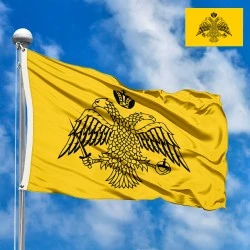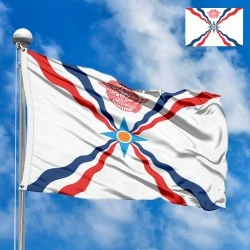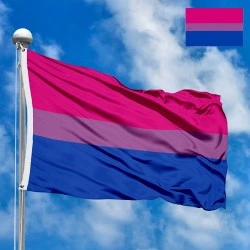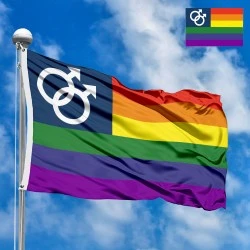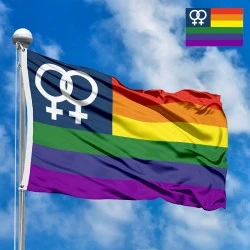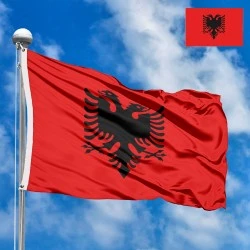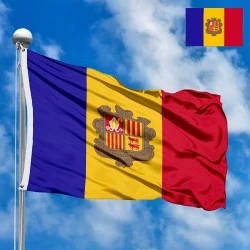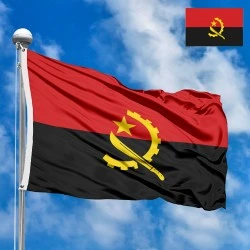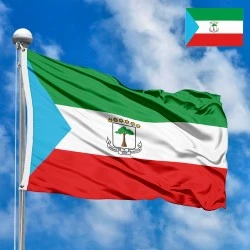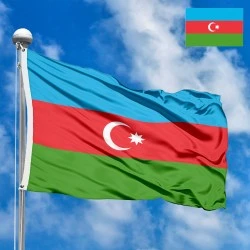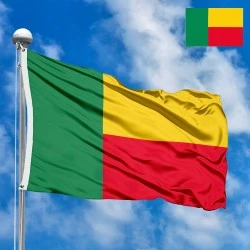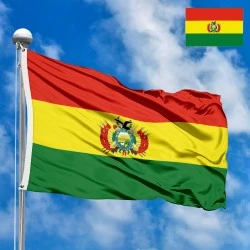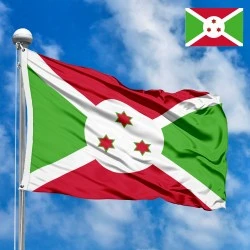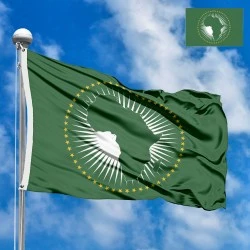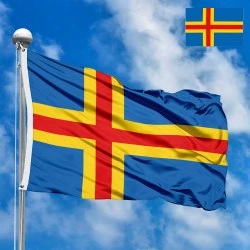Flag of Greece
- Flag Type: State
- Proportions (official): 2:3
- Official name: Hellenic Republic
- Local name: Greece
- Sovereignty (year): YES (1830)
- Member of Organizations: UN, NATO, European Union
- Country code, territory: GR, GRC, 300
- Capital: Athens
- Large cities: Thessaloniki, Patras, Heraklion, Larissa
- Population: 10,381,664 (2024, ELSTAT)
- Religions: Orthodox ~90%, other ~10%
- Area (km²): 131 957
- Highest point: Mount Olympus (2,918 m)
- Lowest point: Aegean Sea (0 m)
- Currency: Euro (EUR, €)
- Languages: Greek
- Dialing code: +30
- National domain: .gr
Flag Information
General information
Demography and Culture
Economy and communications
- All Flags
- Flags of Countries by Continent
-
Flags of Organizations
- Flags of UN countries
- Flags of the European Union countries
- Flags of NATO countries
- Flags of the countries of the Organization of Islamic Cooperation
- Flags of the countries of the Organization of American States
- Flags of the Arab League countries
- Flags of the African Union countries
- Flags of the countries of the Union of South American Nations
- Flags of the Commonwealth of Nations
- Flags of the countries of the Secretariat of the Pacific Community
- Flags of the Nordic Council countries
- Flags of the Caribbean Community
- Flags of the countries of the Association of Southeast Asian Nations
- Flags of the East African Community
- Flags of the countries of the Organization of Turkic States
- LGBT Community Flags
- Historical Flags
- Ethnic Flags
- Flags of the USA (states)
Description
The national flag of Greece, often referred to as the "Galanolefki" (Greek: Γαλανόλευκη, "blue and white"), is a powerful and instantly recognizable symbol of Greek heritage, independence, and the enduring spirit of its people. Its distinctive design features nine horizontal stripes of alternating blue and white, with a white cross on a blue square canton in the upper hoist corner. This striking banner, deeply rooted in the nation's struggle for independence from Ottoman rule in the early 19th century, embodies a rich tapestry of historical, religious, and philosophical meanings that resonate profoundly with Greeks worldwide.
Dimensions, Colors, and Arrangement of Elements: The design of the Greek flag is precisely regulated, ensuring its consistent and symbolic representation as a cornerstone of national identity.
-
The flag consists of nine horizontal stripes of equal width, alternating in color. The sequence begins with a blue stripe at the top, followed by a white, then blue, and so on, ending with a blue stripe at the bottom.
-
In the upper hoist canton (the square in the top left corner closest to the flagpole), there is a white equilateral cross on a blue square field. The arms of the cross extend to the edges of the canton. The canton itself occupies the first five stripes (three blue and two white).
-
The proportions (aspect ratio) of the flag are 2:3. This means the flag's width is 1.5 times its height. The canton's dimensions are designed so that its width is equal to the height of five stripes, and its height is also equal to the height of five stripes, forming a perfect square.
-
The official shades of the colors are critical for the flag's accurate appearance and specific meaning:
-
The blue (often referred to as "sky blue" or "azure") is typically represented by a light to medium shade of blue. Historically, the exact shade has varied, but modern specifications often lean towards a vibrant, clear blue. This color primarily symbolizes the blue of the Aegean Sea and the Greek sky, representing the nation's natural beauty and its maritime tradition. It also signifies freedom and revolution, harking back to the War of Independence.
-
The white color represents purity and innocence, and the justice of the Greek struggle for freedom. It is also said to symbolize the foam of the waves of the Greek seas, further connecting the flag to the nation's strong maritime ties.
-
-
The white cross is a profound symbol of Eastern Orthodox Christianity, the established religion of Greece. It reflects the deep religious faith of the Greek people and their historical connection to the Byzantine Empire.
-
The nine stripes are widely believed to represent the nine syllables of the Greek motto "Eleftheria i Thanatos" (Ελευθερία ή Θάνατος, "Freedom or Death"), which was the rallying cry during the War of Independence. Another interpretation suggests that the nine stripes represent the nine Muses, symbols of Greek civilization and culture. The repetition of stripes can also symbolize the continuous struggle for liberty.
History of the Flag's Creation and Adoption: The modern Greek flag emerged from the crucible of revolution, becoming a beacon of hope and identity for a nation striving to reclaim its heritage.
-
Prior to the 19th century, during centuries of Ottoman rule, there was no single unified Greek flag. Various local and revolutionary banners were used by different groups.
-
The current design originated during the Greek War of Independence (1821-1829). The revolutionary government, seeking a distinct symbol, formally adopted the current design by a decree issued at the First National Assembly at Epidavros on January 13, 1822. This decree stipulated two main forms: a blue flag with a white cross for land use, and the striped flag with a canton for naval use. The latter quickly gained popularity due to its distinctiveness and was associated with the powerful Greek merchant marine.
-
The choice of colors, blue and white, is debated among historians. Some argue it was inspired by the blue and white colors of the Bavarian royal house, as Otto I, a Bavarian prince, became the first King of Greece in 1832. Others maintain it was a direct continuation of revolutionary banners, symbolizing the sea and sky, or a reference to ancient Greek colors, although historical evidence for the latter is scarce. The most prevalent theory is its association with the revolutionary motto and the Christian cross.
-
Initially, there was confusion and inconsistent use of the two variants. However, the striped flag with the canton became increasingly dominant, especially on the high seas, gaining international recognition.
-
After the fall of the monarchy and the establishment of the Second Hellenic Republic in 1924, the striped flag was confirmed as the national flag. Its status was reaffirmed by subsequent regimes.
-
For a period from 1970 to 1975, during the military junta, a slightly darker shade of blue was officially used, and the land flag (simple blue with white cross) was abolished, making the striped flag the sole national flag. This change was largely reversed after the fall of the junta, but the striped flag's position as the sole national flag for all uses (land and sea) was formally codified by law in 1978. This final adoption ensured uniformity and ended decades of dual flag usage.
Symbolism and Meaning for Residents: For the people of Greece, the "Galanolefki" is a potent emblem, embodying their history, their faith, and their national aspirations.
-
The blue and white colors represent the sea and sky that surround Greece, a nation with a vast coastline and deep maritime traditions. They evoke the beauty of the Greek landscape and its connection to the natural world.
-
The white cross is a powerful symbol of Orthodox Christianity, which is central to Greek identity and culture. It signifies the profound religious faith of the Greek people and their historical ties to the Byzantine Empire, an integral part of their heritage.
-
The nine stripes are widely interpreted as representing the nine syllables of the national motto "Eleftheria i Thanatos" (Freedom or Death), the defiant cry that fueled the War of Independence against the Ottoman Empire. This motto encapsulates the unwavering commitment of Greeks to liberty, even at the cost of their lives.
-
The flag is a constant reminder of the struggle for independence and the sacrifices made to achieve national sovereignty. It symbolizes the resilience and determination of the Greek people to preserve their freedom and cultural identity.
-
The flag is flown with immense pride throughout Greece on national holidays, public buildings, and by private citizens. It is a unifying symbol, connecting contemporary Greeks with their ancient past, their Byzantine legacy, and their modern nationhood. It serves as a visual representation of their shared values, historical narrative, and their collective hope for a prosperous future. For Greeks in the diaspora, it remains a vital link to their homeland and heritage.
Interesting Facts: The Greek flag, with its rich history and enduring symbolism, has several intriguing facts associated with it.
-
The "Galanolefki" (Blue and White): This is the affectionate and common name for the Greek flag, directly referencing its two primary colors.
-
Nine Stripes, Nine Syllables: The most popular interpretation of the nine stripes is that they represent the nine syllables of the Greek national motto "Eleftheria i Thanatos" (Ελευθερία ή Θάνατος), meaning "Freedom or Death." This powerful rallying cry from the War of Independence (1821-1829) is central to Greek identity.
-
Religious Symbolism: The white cross prominently displayed in the canton unequivocally symbolizes Eastern Orthodox Christianity, the predominant religion in Greece. It highlights the deep religious faith of the Greek people and the historical role of the Church in preserving Greek identity during Ottoman rule.
-
Maritime Origins: While the land flag (a blue field with a white cross) was also used, the striped version with the canton gained prominence due to its use by the Greek Navy and merchant marine during the War of Independence. Its design was practical for recognition at sea.
-
Shifting Shades of Blue: The exact shade of blue used on the Greek flag has varied considerably throughout its history, ranging from light sky blue to dark navy blue. There were periods when the shade was not strictly standardized, leading to different interpretations. The current official shade is generally a medium-to-light blue.
-
First Adopted during Independence War: The current design was adopted by the First National Assembly at Epidavros in 1822, making it one of the earliest national flags formally chosen by a revolutionary government.
-
No Specific Flag Day: Unlike some countries, Greece does not have a single designated "Flag Day." The flag is prominently displayed and celebrated on national holidays such, as Greek Independence Day (March 25th) and Ohi Day (October 28th), as well as on various religious and historical anniversaries.
-
Symbol of Hellenism: Beyond the borders of Greece, the flag is a powerful symbol of Hellenism – the cultural, historical, and intellectual heritage of ancient Greece – for the large Greek diaspora around the world.
-
Inspired by European Ideals: The idea of a national flag as a symbol of sovereignty and independence was largely influenced by the flags emerging from the French and American Revolutions, which inspired similar nationalist movements across Europe, including in Greece.
In the demonstration images, full-size flags are shown with proportions of 2:3, and hand-held flags with proportions of 1:2.
Color
| COLOR | PANTONE | CMYK | RGB | HEX |
|---|---|---|---|---|
| 280 C | 100-70-0-20 | 16-6-159 | #014488 | |
| White | 0-0-0-0 | 255-255-255 | #ffffff |
Donation
Download
Completely free for commercial and non-commercial use (public domain).
You can freely use them in your news magazines, websites, software, mobile applications.
We appreciate a backlink to https://flagssite.com
Vector files - Flag of Greece (PDF, EPS, SVG, AI)
- .pdf, .eps, .svg, .ai format; RGB color model; Official Proportions.
"30" - image size (by height) in Pixels (px).
!!! For resizing, use the Latin (eng) keyboard layout.
<img src="https://flagssite.com/flags/00svg/20212.svg" height="30" alt="Flag of Greece">
 Vector files 2:3, 1:2
Vector files 2:3, 1:2
- PDF format; RGB, PANTONE/CMYK color model; aspect ratio - 2:3, 1:2.
Raster files - Flag of Greece (PNG, JPG)
 Waving flag
Waving flag
- PNG format (transparent background), 72dpi, dimensions in Pixels (px), aspect ratio 3:4.
- 15х20 px
- 30х40 px
- 60х80 px
- 120x160 px
- 240x320 px
 Sizes:
Sizes:
"v15" - image size (by height); if necessary, replace with available: v15, v30, v60, v120, v240.
!!! For resizing, use the Latin (eng) keyboard layout.
<img src="https://flagssite.com/flags/v15/20212.png" alt="Flag of Greece">
 Round flag
Round flag
- PNG format (transparent background), 72dpi, dimensions in Pixels (px), aspect ratio 1:1.
"d15" - image size (diameter); if necessary, replace with available: d15, d30, d60, d120, d240.
!!! For resizing, use the Latin (eng) keyboard layout.
<img src="https://flagssite.com/flags/d15/20212.png" alt="Flag of Greece">
 Rectangular flag 2:3
Rectangular flag 2:3
- JPG format, 72dpi, dimensions in Pixels (px), aspect ratio 2:3.
"h30" - image size (by height); if necessary, replace with available: h15, h30, h60, h120, h240, h360, h480.
!!! For resizing, use the Latin (eng) keyboard layout.
<img src="https://flagssite.com/flags/h30/20212.jpg" alt="Flag of Greece">

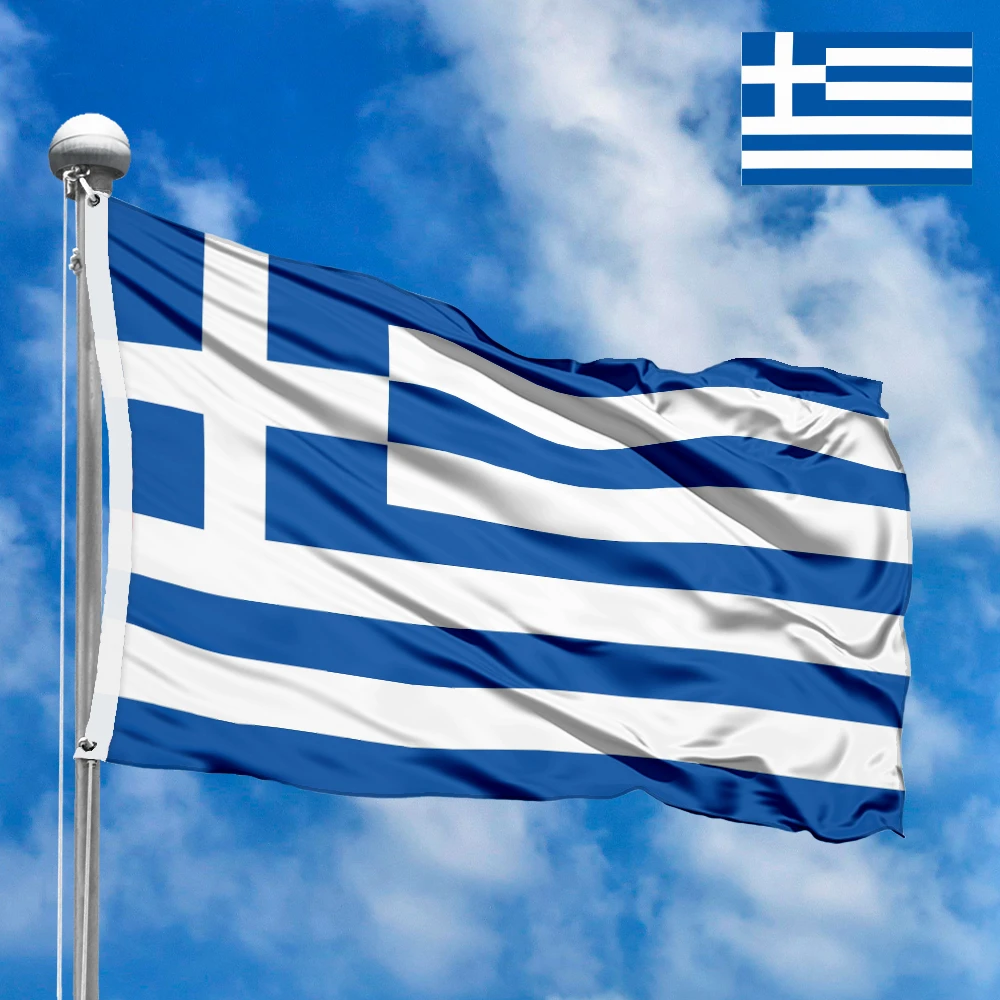
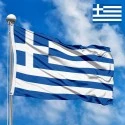



 Sizes:
Sizes:
 Sizes:
Sizes:
